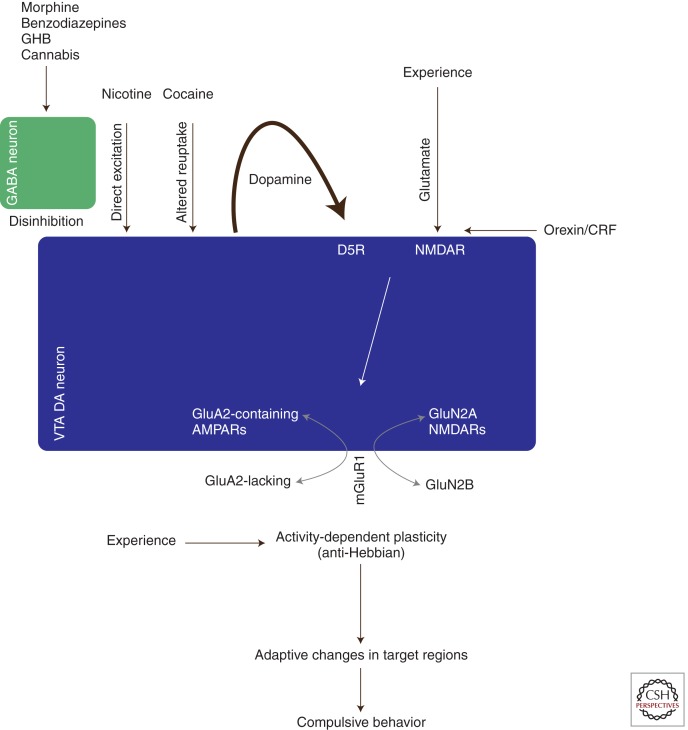Figure 1.
Schematic of the induction and expression mechanism of cocaine-evoked synaptic plasticity in dopamine neurons of the VTA. Addictive substances use distinct cellular mechanisms to cause a surge in dopamine, which through D1-like receptors, in conjunction with NMDAR, cause a redistribution of AMPAR and NMDARs. As a consequence the rules for activity-dependent plasticity are altered, which through yet to be identified signaling pathways leads to adaptive changes in target regions of the VTA. Once such adaptive changes are consolidated, compulsive behavior becomes apparent. For details, see text.

